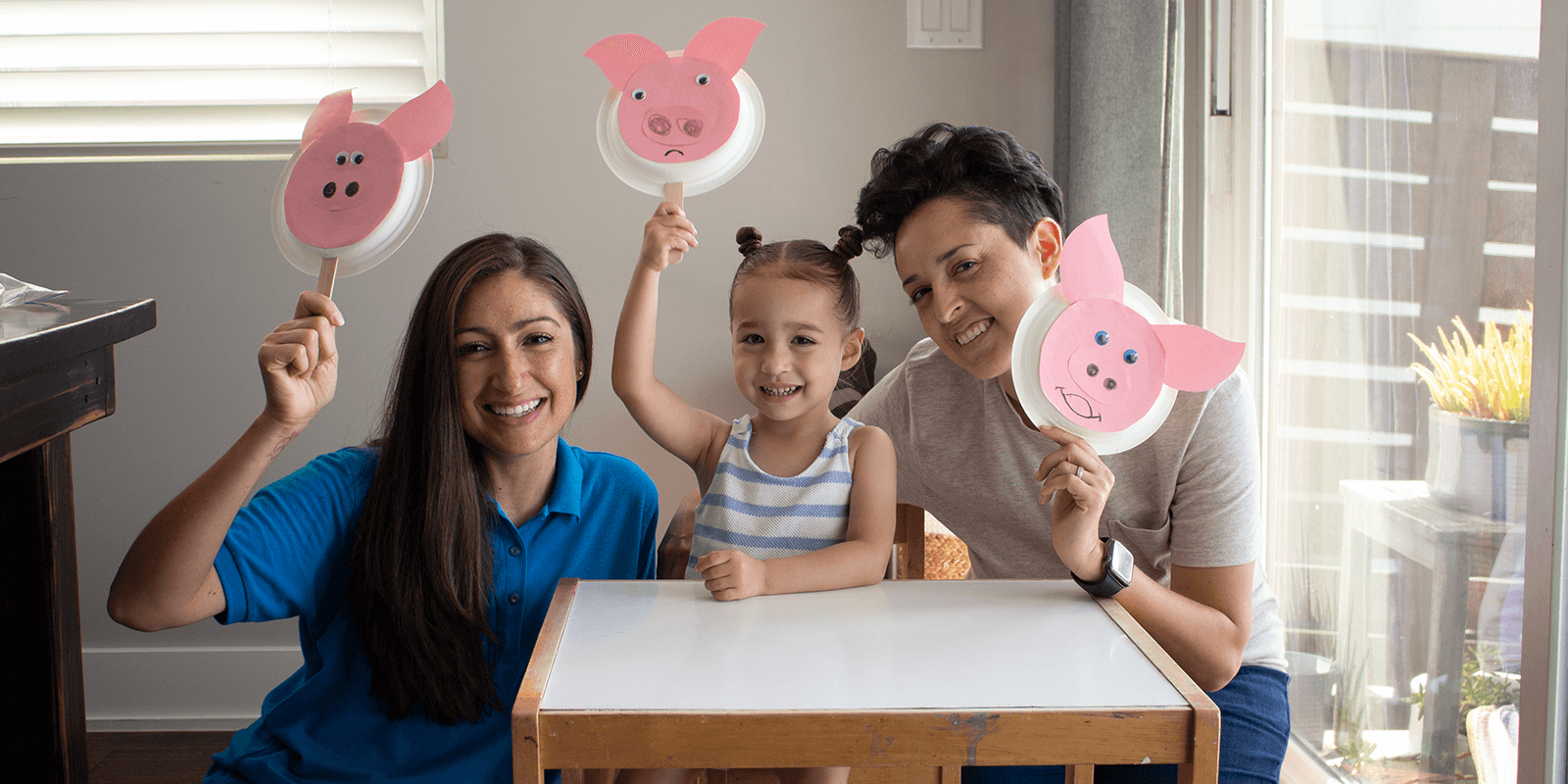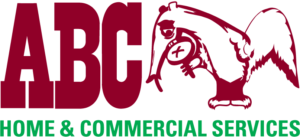Make Animal Face Plates: Joint Attention

Category: Parenting Tips
July 27, 2023
What is Joint Attention and Who Is It For?
The best kind of education is when you’re just having fun and don’t even realize that you’re learning! It’s easy to think about “early intervention” as something you do only if your child is behind or has delays. But many of the activities from our Early Childhood Intervention program stimulate your child’s creativity, bond and connect, and start to see the world through your kid’s eyes.
Organized at-home crafts allow you and your child to focus on the same thing at the same time. You’ll collaborate with your kiddo and encourage the ability to work on the same activity with others. This is a great skill as kids move from solitary and parallel play to more cooperative play by the time they’re four or five years old. Pathways.org has a great breakdown of the different kinds of play.
If you think your child may not be meeting milestones, reach out to us about ways early intervention can help.
This paper plate activity is inexpensive and easy to do with things you already have around the house.
Setting Up the Paper Plate Activity
This activity is endlessly adaptable. However, the main idea is that you’re going to work on one craft at the same time as your child to create an animal face. You’ll need:
- Paper plate; or cut a circle out of a cardboard box
- Construction paper or colorful paper from a magazine; or you (and your child) can color plain white paper
- Scissors
- Crayons or markers
- Glue stick or tape
Depending on the age of your child, you may want to prepare some of the pieces in advance by organizing the materials and cutting shapes. And, as your child gets older and more mobile, prompt the activity by letting them help you find the materials from around the house. For example, “We’re going to do an activity today! We need a few materials. Where do we keep crayons? What can we use to cut this paper?” and so on. These ideas add interest in the activity, and build their knowledge and problem solving skills.
How-To Make a Paper Plate Craft With Your Kids
There's a video at the bottom of this post where you can do the activity real-time with your child and learn about the developmental benefits.
- First, pick an animal you want to make! You can decide in advance to match a book you’re reading or an animal you saw at the zoo or on a show. Or you can ask your child as part of the project. Once you’ve decided, get a book or picture of that animal.
- Place a paper plate on the table. As you’re working, describe the shapes that you see. Let your child hold the plate or any of the materials. If possible, make sure you’re sitting at the same level, whether it’s on the floor or table.
- Get your animal face pieces. If you cut out the pieces ahead of time, keep them out of sight and ask your child to name a part of the face. With older kids, you can take turns coming up with pieces and cutting them out as you work. In the meantime, be sure to ask your child questions and engage with your child:
- Ask them to show you where their nose is: How many eyes do you have? Can you point to my ears?
- Talk about how our body parts function: What does your nose do? What smells do you like?
- Discuss numbers and shapes: How many eyes do have? What shape should the nose be?
- Encourage imitation: Can you pat-pat the mouth shape to stick it down? What sound does a dog make?
- Take turns and talk through what you’re doing. This is where joint attention comes in. You’re working together to accomplish a shared goal. Depending on your child’s abilities, you’ll do different parts of this craft.
- I’m cutting a black circle for the nose.
- First, you spread the glue; then, you put in the place.
- Can you hold the paper while I glue this ear on?
- Next, do you want to draw some whiskers?
Bonus Add-On Ideas
Take your paper plate animal face and use it in imaginative play for more developmental benefits!
Literacy: Read a book that has that animal in it. Add a popsicle stick to the face you created and use it as a puppet. This encourages creativity and active participation in reading.
Sensory: Take a bowl and add dry beans or rice. Add plastic animals, paper shapes, little toys, or anything else that fits your theme. Pretend it’s a farm and have the pigs play in the “bean mud” or have your child be a doggy and dig out some bones. For example, you can use a plastic spoon for scooping or pouring, and a fork as rake.
Why We Do It
What seems like a simple craft idea very quickly turns into a brain-boosting activity! Getting at their level and having that one-on-one attention is key, with promoting brain development as an added bonus.
- Communication
- Understanding and following directions
- Animal labels and sounds
- Identification of body parts
- Size words (big nose, little eyes)
- Give and take discussion with caregiver/friend
- Thinking and Reasoning
- Numbers (2 eyes, 1 nose)
- Understanding of color
- Size concepts (more/less, bigger/smaller)
- Matching animal to their sound
- Identification of body parts and their function
- Sequencing (first we do this, then that)
- Imaginative play with animal face
- Gross and Fine Motor
- Sitting/Standing independently
- Grasping crayon and paper
- Scribbling (Pre-writing skills)
- Use of both hands - learning how to hold with one hand to stabilize the paper while coloring or gluing with the other
- Pasting skill practice - gluing on one side of paper then flipping paper over to adhere
- Social-Emotional
- Positive interaction with caregiver/friend
- Taking turns
- Eye contact - Sitting at the same level encourages eye contact
- Showing pride in finished product
- Expressing emotion
- Self Help
- Independence
- Helping to set up activity
- Helping to clean up
Do you have questions about how your child is developing? Our team will perform screening and assessments to see if your child would benefit from and qualify for Early Childhood Intervention (ECI) services.
Promoting Joint Attention: Paper Plate Activity
Share:
Share:
Share:
RELATED RESOURCES
We work with parents to address any concerns within the first three years, building success for a lifetime.
Messy play can reduce tactile sensitivity, develop motor skills, and improve coordination.
Parent-child activities promote learning and development, as well as encourage bonding and attachment.





